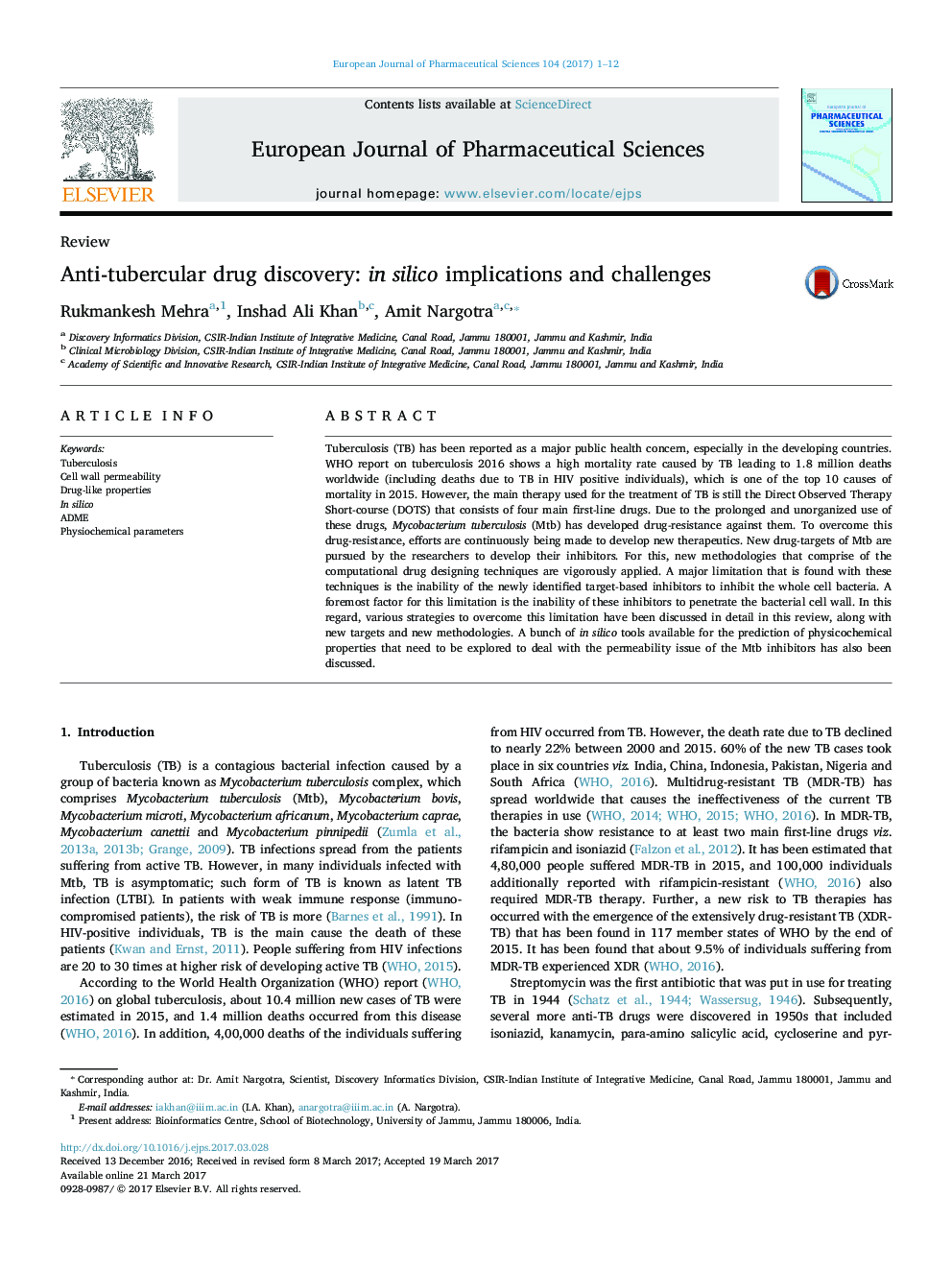| Article ID | Journal | Published Year | Pages | File Type |
|---|---|---|---|---|
| 5547608 | European Journal of Pharmaceutical Sciences | 2017 | 15 Pages |
Tuberculosis (TB) has been reported as a major public health concern, especially in the developing countries. WHO report on tuberculosis 2016 shows a high mortality rate caused by TB leading to 1.8 million deaths worldwide (including deaths due to TB in HIV positive individuals), which is one of the top 10 causes of mortality in 2015. However, the main therapy used for the treatment of TB is still the Direct Observed Therapy Short-course (DOTS) that consists of four main first-line drugs. Due to the prolonged and unorganized use of these drugs, Mycobacterium tuberculosis (Mtb) has developed drug-resistance against them. To overcome this drug-resistance, efforts are continuously being made to develop new therapeutics. New drug-targets of Mtb are pursued by the researchers to develop their inhibitors. For this, new methodologies that comprise of the computational drug designing techniques are vigorously applied. A major limitation that is found with these techniques is the inability of the newly identified target-based inhibitors to inhibit the whole cell bacteria. A foremost factor for this limitation is the inability of these inhibitors to penetrate the bacterial cell wall. In this regard, various strategies to overcome this limitation have been discussed in detail in this review, along with new targets and new methodologies. A bunch of in silico tools available for the prediction of physicochemical properties that need to be explored to deal with the permeability issue of the Mtb inhibitors has also been discussed.
Graphical abstractDownload high-res image (275KB)Download full-size image
